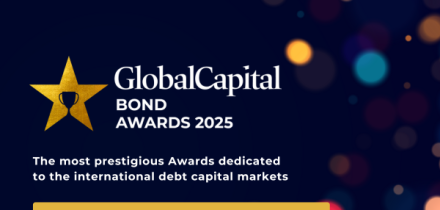
M&G invests in a wide spectrum of equity tranches across consumer and corporate securitizations and CLOs, running best-opportunity type funds and dedicated significant risk transfer (SRT) funds.
“What makes M&G stand out in this space is the ability to allocate capital across a wide spectrum of alternative and private assets while maintaining very high standards of analysis both at the structure and the underlying asset portfolio levels,” says Vincent Charles-Gervais, portfolio manager at M&G.
On the consumer side, M&G originates mortgages through partnerships, such as with non-bank lender Finance Ireland which originates around €30m a month, selling the rated notes to the market and keeping the equity. It also buys back-books of loans which it securitizes and keeps the equity. And it buys equity directly from third-party securitizations.
The track record of the consumer team, established over many years, is a big factor in its success for two main reasons, says Jerome Henrion, director at M&G. First, it gives M&G a high profile meaning that when others have equity pieces to sell, the firm is at or near the front of the queue. And second, having participated in so many transactions over the years, it has built up a 500m-line database of loan data that few of its peers can match.

Of course, data is one thing, but having the skills and technology to use to make good decisions is another. “We can go from a Python script to telling you in seconds about every single car that has traded in a loan pool by model, or vintage or kilometre on the road,” says Henrion. “That’s the data extraction piece. Then there’s the modelling of the data and there’s the interpretation of the model and that’s where the magic happens and what determines our success.”
The size and breadth of its fund offering also means that it has the ability to take down deals where banks are looking to offload the entire capital structure in a securitization. “If you’re only an equity buyer you obviously can’t do that, but by partnering up with other M&G funds that might sit on a different floor than us, we can speak for all parts of the capital structure and that is very helpful,” he says.
On the SRT side, M&G is focused primarily on large corporate transactions and SMEs, but also in more specialised asset classes like social housing or capital call facilities. In both the SRT and consumer sectors, 2020 opened up opportunities.
“The biggest challenge last year was to re-evaluate in very short order all existing and potential investments in our markets and act upon this huge re-underwriting exercise,” says Charles-Gervais.
As it operates only closed-ended funds or limited liquidity funds and doesn’t use leverage, M&G’s business didn’t face redemptions or margin calls during the March and April turmoil. Instead, it was able to buy some positions from forced sellers – and turn those around with, by the end of the year, trades on the consumer side, for instance, up 15 to 22 points.
“Very few people would have guessed in March last year when Covid-19 hit that equity would perform as exceptionally well as it did,” says Henrion.
In the SRT space, the crisis initially hurt bank capital ratios as balance sheets were hit by ratings downgrades, leading them to seek more capital from long-term investors such as M&G. And in CLOs, opportunities opened up to acquire orphaned warehouses of leveraged loans with a view to refinancing.
It did put the brakes on the origination side, and M&G briefly took measures to be more conservative on underwriting standards before it became clear that governments and central banks were going to strongly support consumers through the pandemic.
Now that the market is back on a more even keel, Henrion expects equity to continue to provide strong returns even as some macroeconomic commentators warn of the dangers of an inflationary surge. “Everything else being equal, higher inflation will help improve affordability for borrowers on fixed rate loans, while the collateral appreciates in value so lower default rates and lower loss severity are obviously very helpful for equity,” he points out. “Equity holders also have a lot of other levers to pull to continue to improve returns.”





